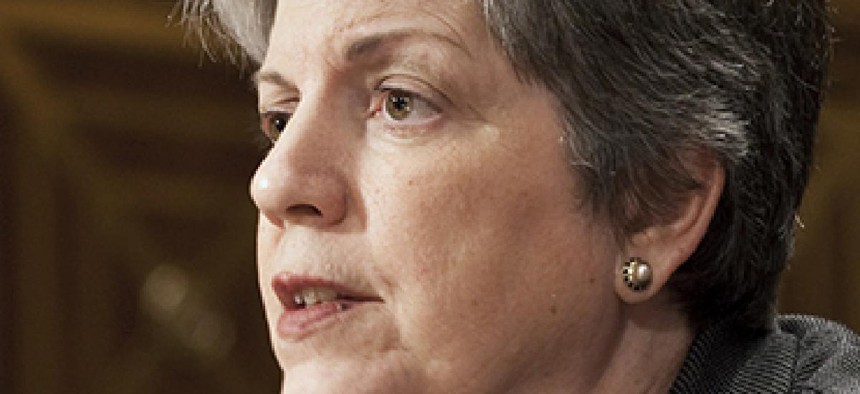Napolitano delivers homeland security update

DHS secretary's speech focuses on security itself, not the department.

DHS Secretary Janet Napolitano (file photo)
As the 10th anniversary of the Homeland Security Department approaches, Secretary Janet Napolitano delivered a speech not on the department but on the state of the nation’s security -- as she put it, “a story of evolution and progress.”
After touching briefly on the history of DHS and immigration reform, Napolitano -- speaking Feb. 26 at the Brookings Institution -- turned to the future of cybersecurity. She called on the public and private sectors to work more effectively in tackling two key challenges: improving real-time information sharing while protecting individual privacy and civil liberties, and promoting adoption of cybersecurity best practices for the nation’s core critical infrastructure.
The cyber realm was not a major priority in the early years of DHS but has become one of five core mission areas of the department, Napolitano said. “All of us depend on cyber-controlled systems for energy, communication, transportation and defense,” she said. “Over the past four years, we have built and deployed systems to detect intrusions and defend federal cyber networks.”
Napolitano also said she remains “cautiously optimistic” that broad cybersecurity legislation will get traction in Congress.
When asked how sequestration will impact DHS, and Napolitano answered after briefly burying her face in her hands in frustration.
“I’ve been in government service a long time, a long time -- 20 years almost,” she. “I have never seen anything like this. It will have to affect our core, critical mission areas. Why? Because of the way it’s done, account by account by account, and also because you have to go where the money is. We are a department dependent on personnel, so when we add it up it’s the equivalent of, in hours, 5,000 border patrol agents. It means less overtime and ability to hire port officers, so longer lines there. It means really the same at the TSA, so longer lines there.”
The long view on security
Before 9/11, Napolitano said, the pre-DHS world encountered several problems: Intelligence failures prevented the U.S. from predicting the attacks, institutional setbacks kept the nation from knowing who the hijackers were, and gaps in the aviation security system allowed terrorists to board planes. Addressing these shortcomings was the driving force behind the creation of DHS 10 years ago, according to the secretary.
“Pre-9/11, our security was reactive and disjointed,” she said, adding that there was too much focus on investigation after the fact and not enough prevention.
Napolitano elaborated on the history of DHS, explaining three “phases” of the department. “DHS 1.0” was the immediate post-9/11 period and the early years of the agency. After significant progress since 9/11, the threat landscape was constantly shifting and “DHS 2.0” came into being, addressing al-Qaida and homegrown threats. “DHS 3.0” is the department’s current phase, with cybersecurity as one focal point, and an approach “more efficient, risk-based and designed to detect, prevent and respond to a range of threats from terrorist attacks to natural disasters.”
“In a world of evolving threats, we can no longer be reactive or isolated,” Napolitano said.


